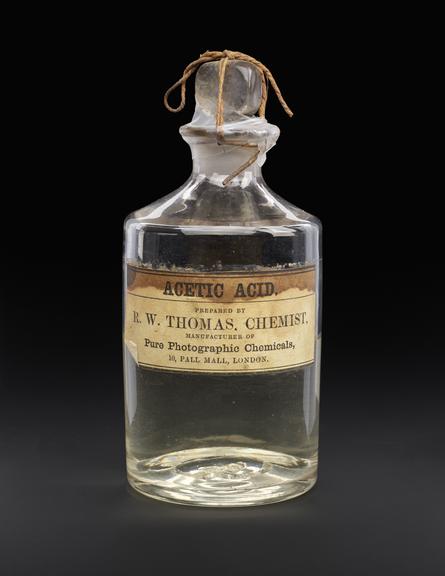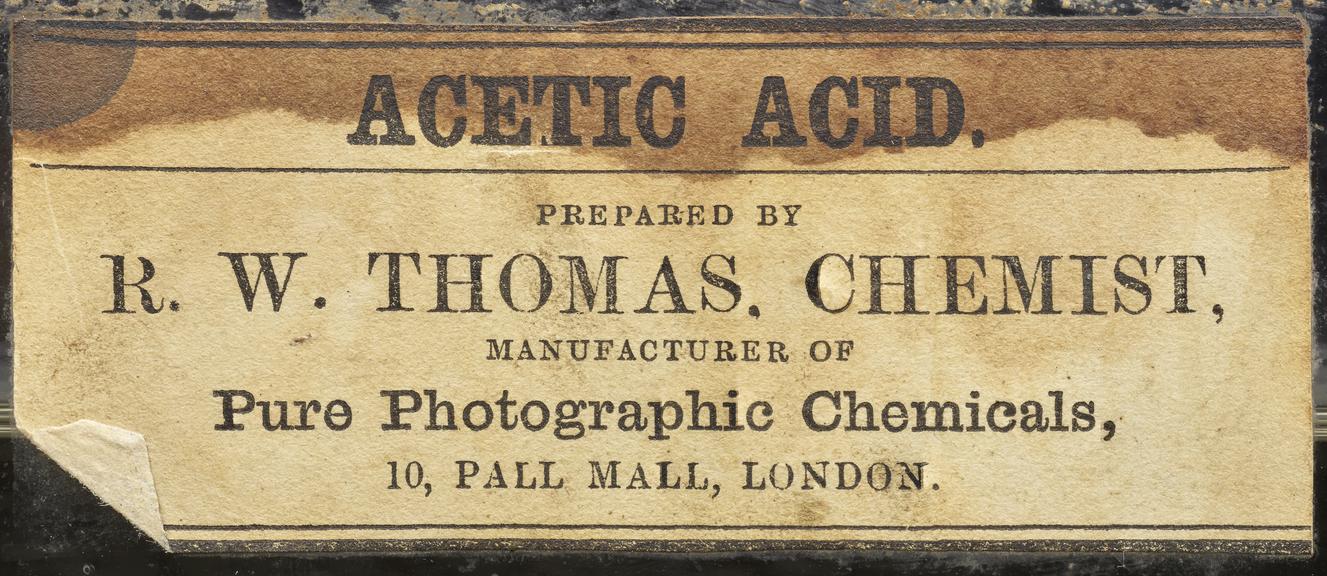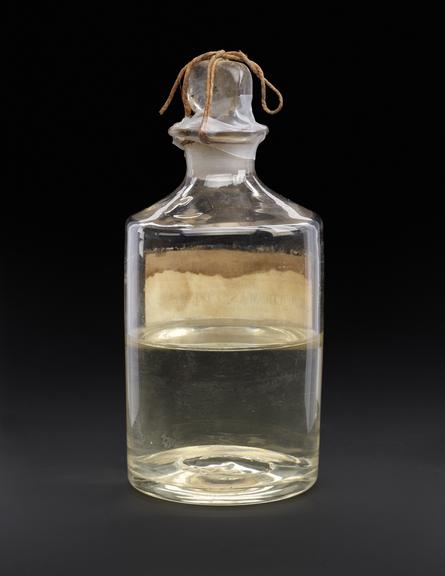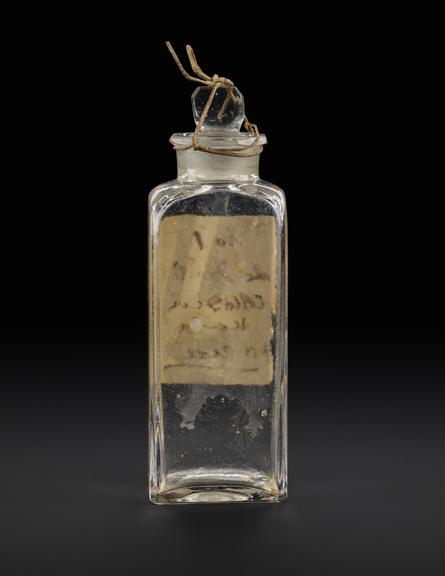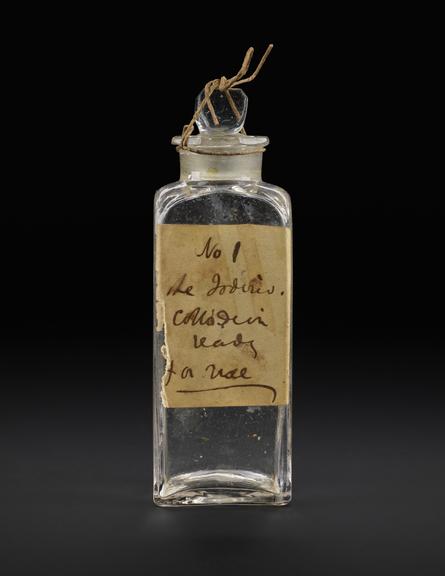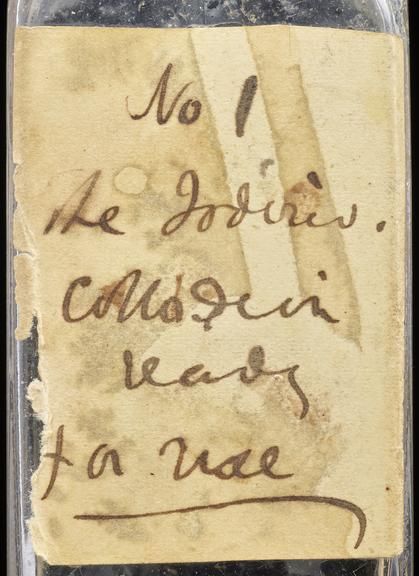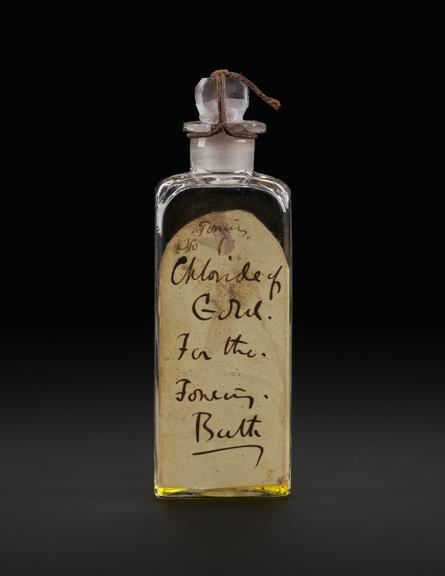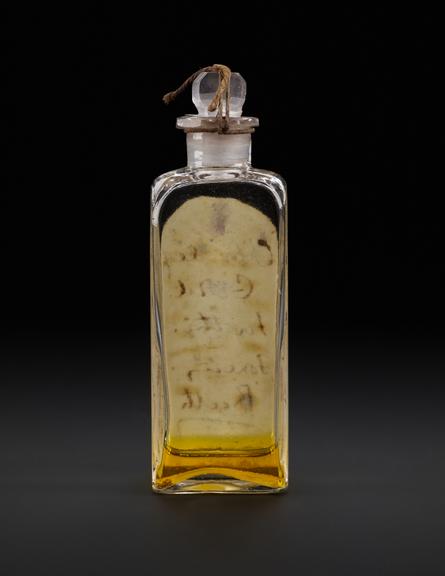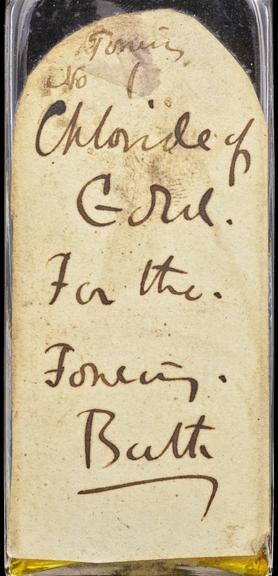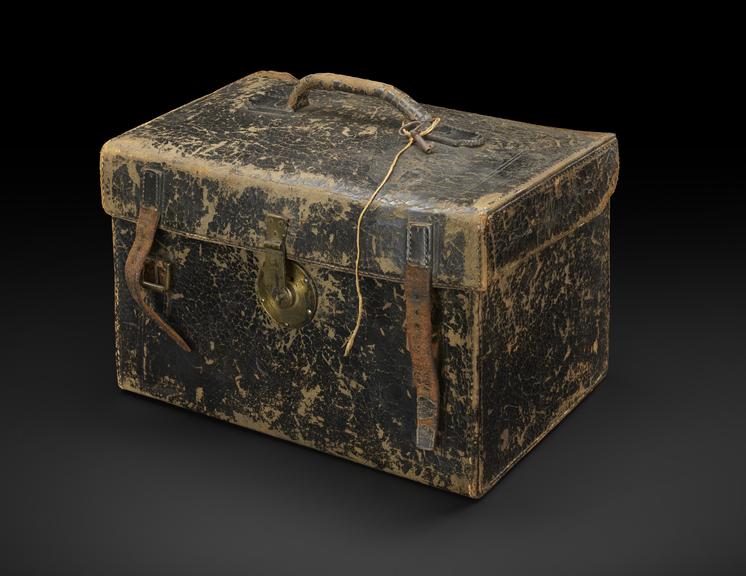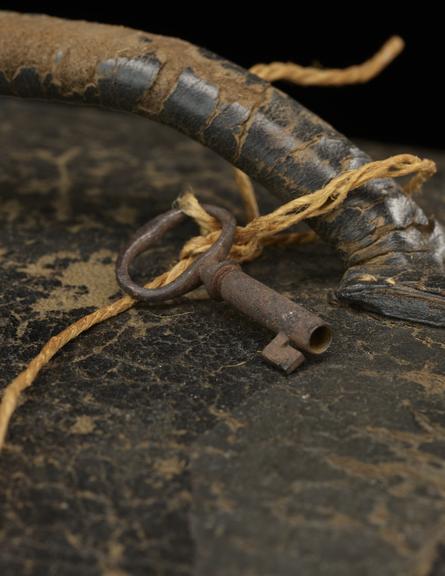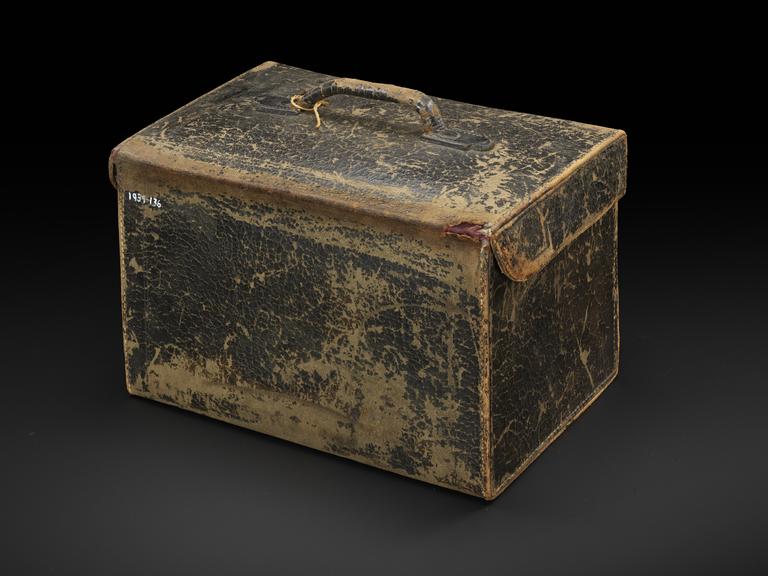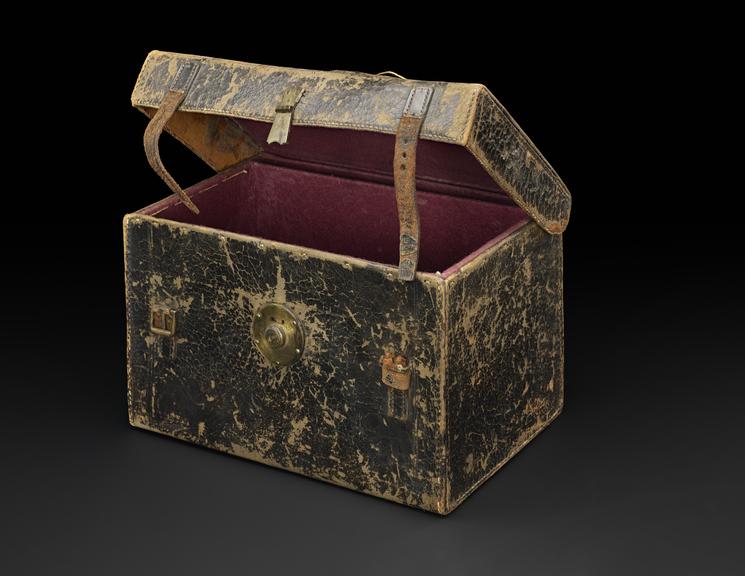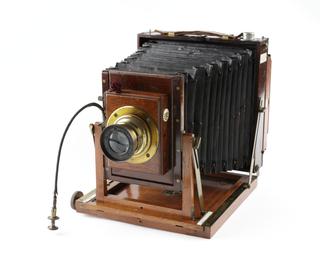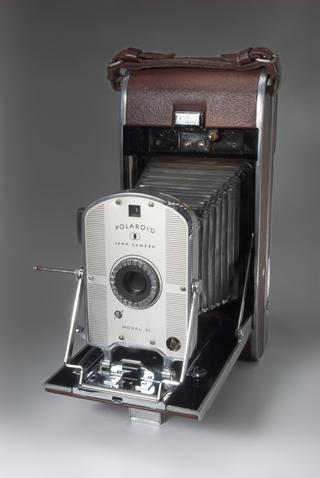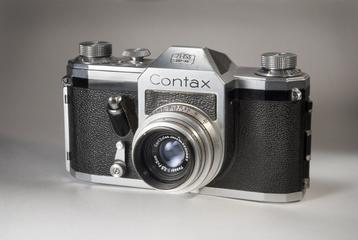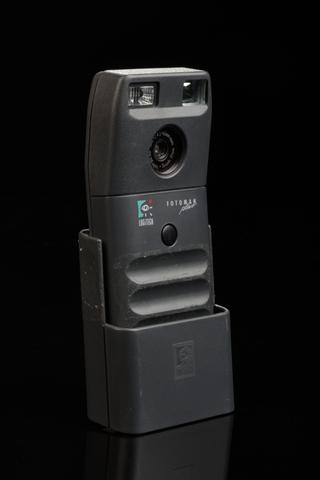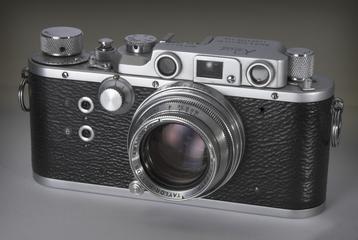Set of chemicals for wet-plate process in 12 glass bottles in leather portable case, with two leather gloves, 1854. Comprising 1. citric acid, 2. carbonate of soda, 3. iron III solution, 4. crystal varnish, 5. unidentified chemical, 6. hypo bottle (empty), 7. acetic acid, 8. iodised collodion solution, 9. collodion solution (residue), 10. pyrogallic solution, 11. nitrate of silver solution, 12. chloride of gold.
Each of the chemicals in the set had an important role in making a photograph on glass. Sodium bicarbonate was used to remove any dirt or grease from the glass plate. Once clean, collodion was poured on to the surface of the plate, which was then immersed in a bath of silver nitrate.
The sticky plate would then be loaded into a camera and developed immediately, hence the name ‘wet process’. After exposing the plate for a few seconds, the photographer would develop the image. This was achieved by immersing the plate in an acetic acid and iron solution. Finally, a varnish was applied, and gently heated over a flame to dry and seal the plate.










